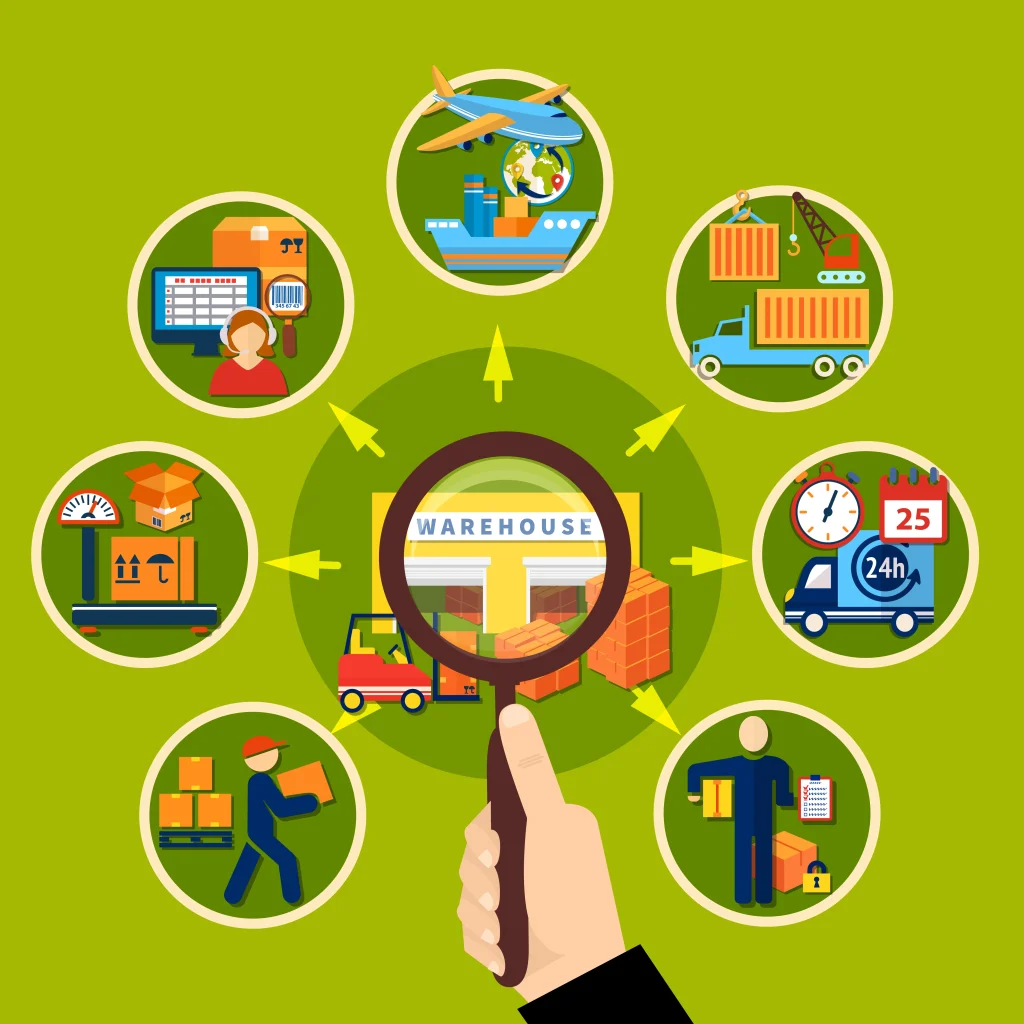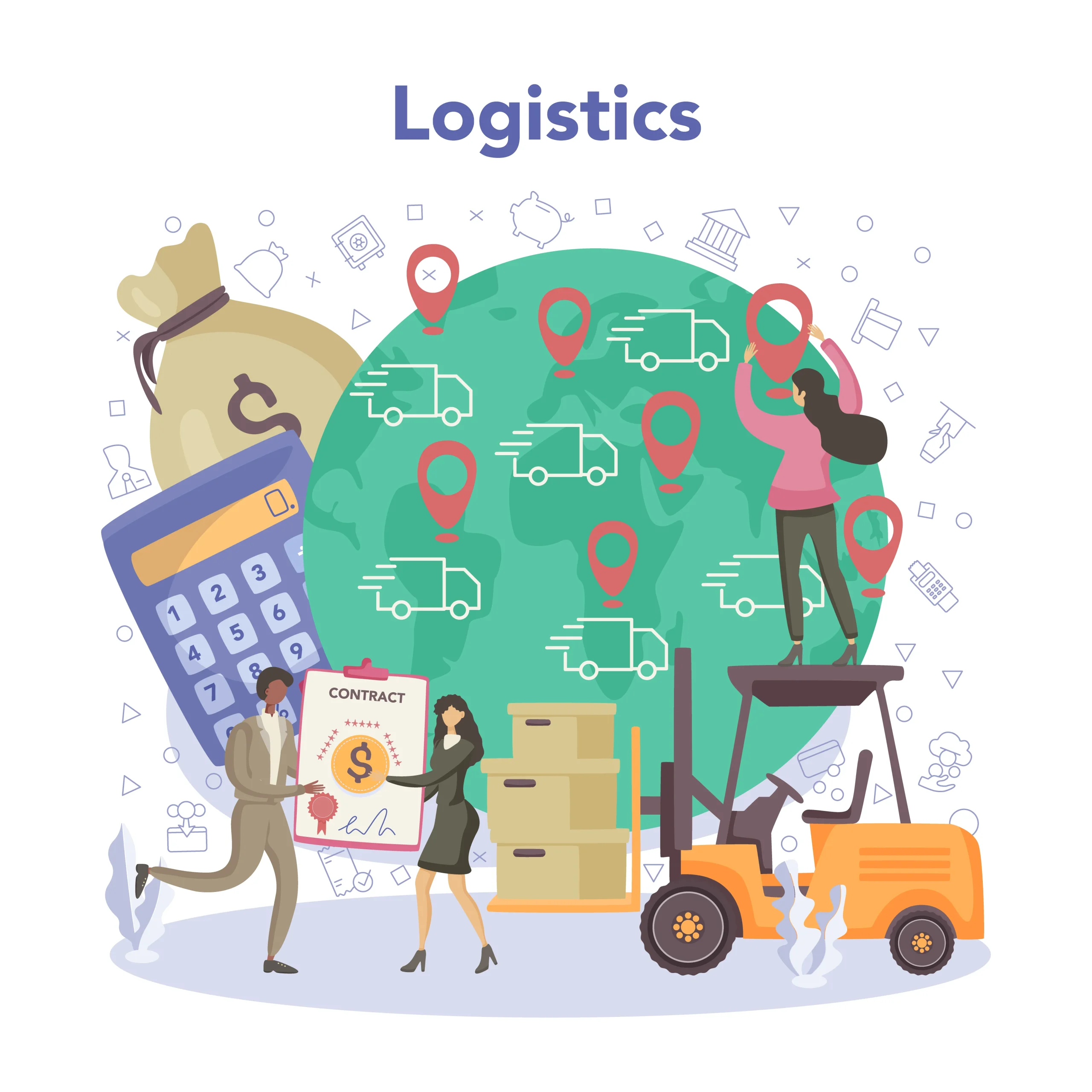Efficient Logistics Management Made Easy: How to Streamline Deliveries and Boost Customer Satisfaction
In the world of e-commerce and warehousing, efficient logistics management is a cornerstone of success. It ensures that products move seamlessly from warehouse shelves to customer doorsteps. A well-structured logistics process reduces errors, saves time, and enhances customer satisfaction. Let’s dive into how businesses can optimize their logistics systems and the role smart tools like 8Stock play in simplifying these processes.
What is Logistics Management?
Logistics management involves coordinating the movement of goods, from receiving inventory to delivering finished products to customers. It includes several key processes such as:
- Inventory storage and management.
- Picking and packing orders.
- Shipping and delivery.
- Handling returns.
Efficient logistics ensures that these steps are carried out with minimal delays, errors, or wastage.

Why Does Logistics Management Matter?
Customers expect quick, accurate deliveries. Poor logistics can lead to:
- Delayed shipments.
- Incorrect orders.
- Increased operational costs.
- Dissatisfied customers and negative reviews.
By streamlining logistics, businesses can:
- Reduce shipping times.
- Minimize costs.
- Enhance the overall customer experience.
Steps to Improve Logistics Management
1. Optimize Warehouse Layout
An organized warehouse layout can significantly improve efficiency. Arrange products logically to reduce the time spent locating items.
Example: A business selling sports equipment groups items by category (e.g., basketballs, tennis rackets) and places bestsellers closer to the packing station for faster access.
2. Implement Real-Time Inventory Tracking
Real-time inventory tracking ensures you know exactly how much stock is available. This reduces the risk of overselling or stockouts.
Example: A store selling electronics tracks stock levels with a warehouse management system (WMS) to update inventory instantly after each sale.
3. Use Data to Forecast Demand
Analyzing historical sales data helps predict demand. This ensures you have enough stock during peak seasons and avoid overstocking during slower periods.
Example: A clothing retailer notices a spike in sales for winter coats in November. By forecasting, they prepare their warehouse to handle increased orders.
4. Automate Order Picking and Packing
Manual picking and packing can be time-consuming and error-prone. Automation speeds up the process and improves accuracy.
Example: An online bookstore uses automated picking systems to locate and pack books quickly, reducing order fulfillment times.
5. Partner with Reliable Shipping Providers
Choosing the right shipping partners is crucial for timely deliveries. Evaluate carriers based on cost, reliability, and coverage.
Example: A business delivering to remote areas partners with a courier specializing in rural logistics to ensure packages reach customers on time.
6. Monitor and Optimize Delivery Routes
Efficient route planning minimizes delivery times and fuel costs. Use technology to find the best routes for your drivers.
Example: A bakery offering same-day delivery uses GPS tracking to optimize routes, ensuring fresh products reach customers promptly.
The Role of Technology in Logistics Management
Technology has transformed logistics, making it more efficient and data-driven. Tools like warehouse management systems (WMS) and logistics platforms simplify complex processes.
1. Centralized Order Management
A centralized system consolidates orders from multiple channels, such as online marketplaces and retail stores, into one platform.
Example: A beauty brand selling on Lazada, Shopee, and its website uses a WMS to manage all orders in one place, reducing confusion.
2. Real-Time Tracking and Updates
Real-time tracking gives customers visibility into their orders and helps businesses monitor shipments.
Example: A food delivery service uses GPS tracking to provide customers with live updates on their orders.
3. Automated Notifications
Automated notifications keep customers informed about their orders, enhancing transparency and trust.
Example: A fashion retailer sends automated emails to notify customers when their orders are shipped and delivered.
4. Advanced Reporting and Analytics
Data analytics helps businesses identify bottlenecks and optimize processes.
Example: A furniture retailer analyzes delivery times to identify delays and improve shipping efficiency.
Real-Life Example: How Technology Transformed a Local Business
The Challenge: A Malaysian business selling organic skincare products faced challenges in managing logistics. Delayed shipments and incorrect orders led to customer complaints and lost revenue.
The Solution: By adopting a logistics management platform, they:
- Streamlined order processing.
- Improved inventory accuracy.
- Partnered with reliable couriers for faster deliveries.
The Result: Customer satisfaction improved, and the business grew its repeat customer base by 30%.
Role of 8Stock in Logistics Management
Tools like 8Stock simplify logistics by integrating inventory management, order processing, and reporting. For instance, 8Stock’s real-time inventory tracking ensures accurate stock levels across multiple platforms, reducing errors. Its analytics feature helps businesses identify trends and improve efficiency.
By using such a tool, businesses can focus on growth rather than getting bogged down by logistical challenges.
Best Practices for Logistics Management
1. Train Your Team
Ensure your staff understands the importance of efficient logistics and is trained to use relevant tools.
2. Regularly Review Processes
Periodic reviews help identify inefficiencies and implement improvements.
3. Focus on Customer Feedback
Listen to customer feedback to address pain points and enhance their experience.
4. Leverage Technology
Adopt tools that automate and streamline logistics processes. Start small and scale as your business grows.
Conclusion
Efficient logistics management is vital for meeting customer expectations and staying competitive. By optimizing processes, leveraging technology, and using tools like 8Stock, businesses can streamline operations and enhance customer satisfaction. Start evaluating your logistics processes today and take steps to make them more efficient. Your customers will thank you!
Request for a demo today to view firsthand on how 8Stock can enhance logistics processes efficiently.

